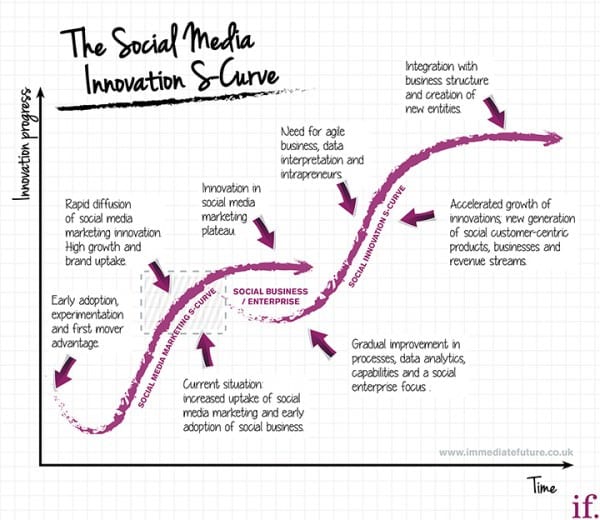Whilst I was collating the examples (it took some research and a big thank you to my social networking friends who helped me out!), it became clear that there were different ways in which to innovate for the collaborative economy.
5 ways to innovate for the collaborative economy:
- 1. Create it! The most inventive of all the methods is the creation of a completely new product. Back in the old days of banking it was First Direct with its telephone banking innovation that grabbed consumer attention.
Today, in a more social world, it is Barclaycard with its Ring MasterCard. The credit card gives customers unprecedented levels of control with access online to the company’s profit and loss, alongside voting on fees, APRs and T&Cs.
Connected to a community forum, customers share marketing thoughts, ideas and concerns with a Barclaycard 'Community manager' and other customers. A new product for a new financial customer.
- 2. Partner for it! Dismissed as a gimmick by some, another credit card has found a different way to capture the connected consumer. American Express joined forces with Twitter to offer a purchase-by-tweet service.
Using a specific hashtag customers, once connected to the service, can trigger payments for products from Amazon, Sony and Microsoft with more to come.
Sometimes innovation comes from working with others.
- 3. Buy it! And why partner when you can buy outright? It is what Yahoo! has done in its purchase of Flickr and Tumblr. But maybe that is not a great example of innovation.
Better is the way BSkyB tapped into the connected and social TV audience. It bought a stake in Zeebox (an exclusive UK deal no less). The app, integrated into the Sky offering, brings social networking together with live programme information.
Customers can see who else is watching TV and interact with tweets and status updates. Further interactive opportunities and advertising bring new revenues to the broadcast giant.
- 4. Crowdsource it! A lovely explanation from Kimberly-Clark shows how they sourced innovation for new products from Mumpreneurs.
- 5. The final one is hard to find. It is the game changer.
Steve Jobs said, when talking about product innovation, 'A lot of times, people don’t know what they want until you show it to them.'
The game changer happens when a brand looks at an audience and understands what it needs, not necessarily what it asks for. For me it is Google that gets this at the moment. Think Google Glasses. An innovation that takes a leap to the next level. An organisation that understands how consumers are connecting via mobile devices, and considers how it might make itself useful. Google Glasses will definitely be a game changer. And I will definitely be on standby to get the first pair I can lay my hands on (are you listening Google?!).
Social innovation is the true game changer
Social innovation is the next stage in the re-engineering of business. And it is a lucrative revenue stream. I am not talking about the gimmicks and the promotions from Facebook customised cars to special edition consumables sold on platforms. I am talking about a leap into a new product or service. A new generation of innovations that taps into the evolved social media customer; and creates a new business opportunity.
Why? Because social media has changed consumption
Whether you’re in B2B or B2C the connected networked world we live in has changed your customers. Recent Global Web Index data shows that we consume digital 57% of the overall daily media time and social, 48% of online time.
Your customers are social today, and the numbers will continue to grow tomorrow. And with this change in the way we connect, expectations and behaviours have altered.
This week at Le Web, the conversation centred on the ‘sharing economy’. A new way of consumption. The Economist suggests that we are in a collaborative economy and this emerging model is now big and disruptive enough for regulators and companies to have woken up to it.
Who’s seizing the advantage and innovating now?
Bar a few exceptions, it isn’t brands that are seizing the opportunity. It’s the new kids. The start-ups.
According to a Guardian article this week, Etsy were created to meet the demand of the collaborative customer. CEO Chad Dickerson said, 'We’re creating a people-powered economy where people are buying and selling from and to other people in their communities.'The company’s gross merchandise sales rose from $525.6m in 2011 to $895.1m in 2012.
Another well-known collaborative, sharing business, Airbnb is generating revenues from 192 countries, 30, 000 cities and capturing bookings from 40,000 customers daily.
Thinking beyond social business now, means you can prepare to innovate. Create structures that help you harness data insight; break out of the silos and develop intrapreneurs. A social business spots the social opportunity and is agile enough to deploy innovation ideas quickly. And ultimately a business looking for social innovation will open new, powerful, revenue streams that will take the brand into the future.








